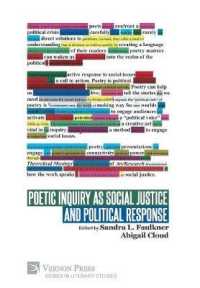- ホーム
- > 洋書
- > ドイツ書
- > Mathematics, Sciences & Technology
- > Earth Science
- > geology
Description
(Text)
The rocks of the lower most part of the Gondwana Supergroup of Permo-Carboniferous age are represented by Talchir and Barakar Formation exposed along the Barakar River, Raniganj basin. Raniganj Basin, has a semi-elliptical, elongated shape, and covers an area of ca. 3000 km2 between the Damodar and Ajay rivers. In the present work the rocks of Barakar Formation have been examined through the studies of facies analysis and Facies association. All these facies and facies association are interpreted to deduce the environmental condition that prevailed during the deposition of the sediments of Barakar Formation. The study of the rocks of Barakar Formation reveals that the environmental condition was influenced by fluvial, tidal and storm activity, which on the other hand indicates a deltaic environment for the deposition of the sediments.







